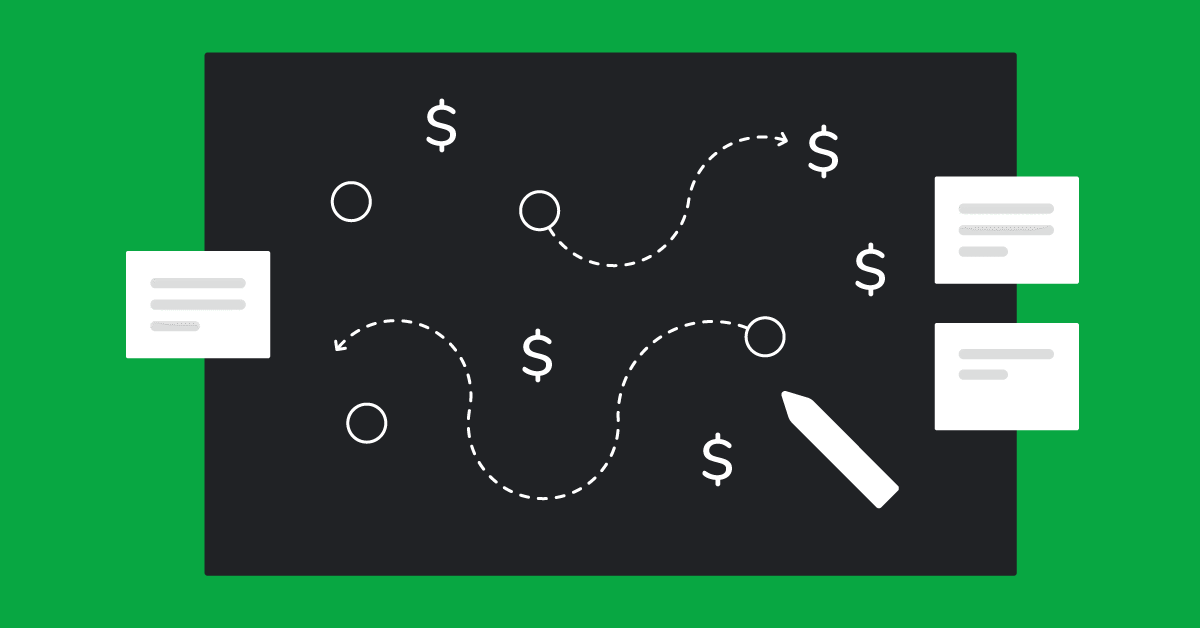When pipeline momentum slows, a focused sprint can reset the pace. A sales blitz concentrates your team on one segment, one offer and one conversion goal for a short, defined window. The payoff is clarity: tighter messaging, faster feedback on what resonates and a surge of near term meetings that refresh the pipeline.
A well run sales blitz improves operating rhythm with daily coaching, clear ownership and disciplined follow-through.
A sales blitz is a coordinated, time-boxed campaign with prepared lists, reserved calendar capacity and consistent touch patterns across email, calls and social. Run it as a two week experiment pairing high activity with clear intent.
Measure the signal you generate: which segments respond, which messages convert and where to invest next. Your customer relationship management (CRM) software should centralize targeting, activities and reporting so the team moves quickly without losing context.
Key takeaways
Time-box the blitz to 7–14 days and focus on one segment, one offer and one conversion goal to keep execution sharp.
Prep the foundations before day one: clean lists, clear messaging, booked calendars and SLAs, so reps can start immediately.
Coach daily, run a midpoint review and move the best-performing message to the top of the sequence to lift results fast.
Track inputs and outcomes together, then cohort by segment and message to separate useful signals from raw activity.
Find out how Pipedrive can centralize targeting, activities, automation and reporting so the sprint stays organized and measurable with a 14 day free trial.
What is a sales blitz?
A sales blitz is a short, time boxed campaign— usually 7 to 14 days. A cross-functional team runs a coordinated outreach plan to a defined audience with one outcome in mind, for example, booked sales meetings, trial starts or reactivations. Scope is narrow to increase impact: one segment, one offer, one sequence and one follow-up service-level agreement (SLA).
Effective sales blitzes share the same setup. Lock the target list before day one using clear criteria. Lead with a problem or outcome the segment cares about. Reserve calendar time so interest can turn into meetings without delay. Set daily activity targets and hold quick coaching huddles to keep execution consistent.
Adjust as you go. Use a midpoint review to refine subject lines, openers and call frameworks. Measure both inputs and outcomes: touch adherence, connect rate, meeting rate, opportunities created and pipeline added and watch quality signals like positive reply intent and early stage movement.
How to plan a sales blitz
Good sales blitzes are won before day one. Use this planning checklist to remove friction, align ownership and make sure sales calendars, data and messaging are ready so the team can focus on execution.
Assign ownership and cadence. Name a sales blitz lead, set a daily stand-up and a short end-of-day recap so decisions and changes roll out cleanly.
Confirm capacity and routing. Block calendars for discovery calls, define who takes meetings and set routing rules by region or segment.
Clean the data. Remove do-not-contact records, dedupe, verify domains and tag the sales blitz cohort so results are easy to read later.
Define the offer and outcome. State the single action you want and why it matters to this audience right now.
Write a concise sequence. Limit to a few touches across email, calls and social; keep the ask specific and easy to accept.
Prepare a lightweight enablement kit. One page with audience, value, talk track, common sales objections and a short case or demo link.
Set targets and SLAs. Daily touch goals by role, a response window for inbound replies and a rule for moving from prospecting to meeting prep.
Pre-plan the midpoint pivot. Decide which numbers trigger changes (for example, if positive replies are low, test a new opener and if replies are high but meetings are low, tighten the ask or fix scheduling).
Close the loop paths. Map outcomes, booked, qualified no, not now, no response and set short nurture paths so the sales blitz feeds the ongoing pipeline.
Note: According to RAIN Group’s Top Performance in Sales Prospecting research, it takes an average of 8 touchpoints to secure an initial meeting, top performers do it in 5. As such, plan your 7 to 14 day blitz cadence, sequences and calendar holds to hit that rhythm.
Sales blitz ideas that convert
Reactivation plays work well when you can reference change. Reach out to previously engaged prospects or closed-lost opportunities with a specific update, such as, a new capability, a pricing change, an integration or a case study in their industry.
Expansion plays target active customers with clear signals. Usage patterns, new stakeholders or upcoming initiatives can anchor a focused ask for a quick planning call. The sales goal is a defined next step tied to a value outcome. According to Farris, Bendle, Pfeifer and Reibstein in Marketing Metrics, the probability of selling to an existing customer is 60–70% vs. 5–20% for new prospects, so plan blitzes that expand existing accounts.
— Anthony Iannarino, The Sales Blog
Event-triggered plays build on momentum that already exists. Follow up with webinar attendees, recent booth scans, funding announcements or leadership hires with a short message that connects the event to a relevant outcome and an easy path to schedule.
Partner and referral days compress warm introductions. Spend a single day co-selling with one partner, exchanging intros for a narrow ideal customer profile (ICP). Keep the ask small and the scheduling friction low.
Short video messages and point-of-view posts can lift response in certain segments. One minute of specific value, a quick teardown, a sales metric you can move, a pattern you’re seeing often beats another paragraph of copy, especially late in the week.
Execution playbook: a day-by-day cadence
Use this cadence to keep the blitz focused, measurable and easy to coach.
Days 0–1: Finalize the list, sequence and enablement. Confirm calendar holds and SLAs, load templates, set activity targets, brief the team and do a quick role play. By the end of day 1, you should be ready to send or dial.
Days 2–5: Execute with quality and coach live. Run short huddles twice a day to review reply quality, call outcomes and objections. Adjust subject lines, openers and talk tracks based on data. Keep logging consistent so the midpoint review is useful.
Days 6–7 (midpoint): Cut what doesn’t work and promote what does. Move the best message to position one. Refresh the list only if you’ve exhausted quality targets or found a better filter. Reconfirm calendar capacity for the push phase.
Days 8–12: Shift to conversion. Prioritize follow-ups, handoffs and no-shows. Tighten message length and the ask. If responses spike, reallocate time from sales prospecting to meeting conversion and preparation.
Days 13–14: Close loops. Convert late replies, clean data and route open opportunities to owners with clear notes, next steps and dates. Capture learnings while they’re fresh.
Note: According to CSO Insights’ 2019 Sales Enablement Study, teams with dynamic sales coaching averaged a 55.2% win rate vs 41.8% with random coaching, 19% above the study average and 32% above random, which supports daily huddles and a midpoint review during the sales blitz.
Sales blitz metrics that matter and how to read them
Use this lightweight table during the sales blitz.
Metric | Description | Cadence |
Touches per rep | Outbound actions completed vs target | Daily |
Sequence adherence | Steps completed on time and in order | Daily |
Connect rate | Live conversations as a share of dials | Daily |
Time to first response | Minutes from inbound reply to first action | Same day (SLA) |
Positive reply rate | Replies showing clear interest | Daily |
Booked-meeting rate | Contacts that schedule from outreach | Daily |
Meetings set | Count of first meetings scheduled | Daily |
Opportunities created | Qualified deals opened from the blitz cohort | Weekly |
Pipeline added | Total value of opportunities from the blitz | Weekly |
Stage progression | Opportunities moving to the next stage within 14–30 days | 14–30 days |
No-show rate | Share of first meetings missed | Weekly |
Win-back/reactivations | Stalled or closed-lost re-engaged | Weekly |
How Pipedrive helps you run a sales blitz
Pipedrive brings structure and visibility to a sales blitz so the team can move fast without losing context. It keeps the list, offer and goal in one place, which makes coordination simple and execution consistent.
With contact management, custom fields and filters, you can define a precise segment and save it as a shared view. Tag the blitz cohort to track outcomes cleanly across the campaign.
Execution stays on track with activities, due dates and templates. Connect calling and email so outcomes are logged the same way every time and reps always know the next action. Sales automation reduces lag. Create follow-up tasks when a call is completed or a reply arrives, advance stages when a form or booking fires and nudge owners when SLAs are at risk.
Sales dashboards give real-time signals. See daily touches, positive replies, meetings set, opportunities created and sales pipeline added for the blitz cohort. Compare message versions and reps to decide what to promote at the midpoint review.
After the sprint, keep momentum. Convert winning messages and filters into a reusable play, route open opportunities with clear next steps and schedule a 30-day follow-up report to. Pipedrive gives you one place to run the blitz, read the results and turn what worked into a repeatable playbook.
Final thoughts
A good sales blitz is a focused experiment. It trades breadth for depth, forces decisions about audience and offer, creating a feedback loop you can’t get from business-as-usual outreach. The near-term wins are useful, more meetings, cleaner pipeline, but the lasting value is operational.
Treat each sales blitz as versioned work. Capture what to keep, what to kill and what to iterate. Over time you’ll build a library of plays, better data discipline and a faster path from idea to pipeline.






